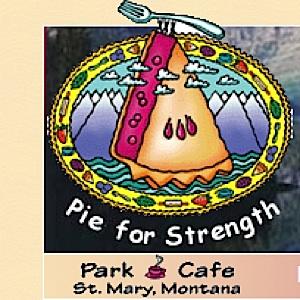Good food and national parks aren't always discussed in the same conversation, but there are some great meals to be had in the parks.
Places such as the Metate Room at Mesa Verde National Park or the Mammoth Springs Hotel in Yellowstone National Park can compete with many fine big-city restaurants.
But there are other lodge dining rooms that, well, still have a ways to go in terms of elevating their menus.
With that understood, which restaurants and meals in, or nearby, the national parks would you recommend to your friends?
For instance, I frequently recommend the Jailhouse Cafe in Moab, Utah, for breakfast before heading off into Arches or Canyonlands national parks, the Park Cafe in St. Mary, Montana, outside Glacier National Park lives by its motto -- Pie for Strength --, and when in Bar Harbor, Maine, during visits to Acadia National Park I've had some great meals at Cafe This Way.
So, what say you? What restaurants/dining rooms in, or nearby, national parks would you speak highly of?




Comments
The employees I talked to told me that they'd never heard of a bear wandering in there, but occasionally they had uninvited bison showing up.
Y_P_W, your review (and your knowledge) is much more complete than what I have to contribute. We were invited by a relative that worked at Hog Island to go out with him to do required water quality samples after heavy rains in the area and I didn't actually consume any of their treasures that day on the patio. Afterwards I cooked massive servings of fried Razor Clams that I had dug on several coastal beaches on my journey down the coast. I wonder, are the clam beaches at Klaloch (Olympic Penninsula) under NPS control or WDF?
From press releases, it sounds like NPS has ultimate control over clam harvest in their areas, although they seem to work with WDFW to get their times to coincide with the OKs to dig in beaches outside the park. It sounds like a WA clam license is needed regardless of where one is digging.
http://www.nps.gov/olym/parknews/october-razor-clam-dig.htm
http://www.nps.gov/olym/parknews/2011-razor-clam-harvest-suspended.htm
http://wdfw.wa.gov/fishing/shellfish/razorclams/
I recently went up to Washington and was looking for some places to buy oysters when I came across the regulations on public oyster harvesting. Apparently one isn't supposed to keep the shells. The harvest must be done by shucking the oysters and placing the meat in a jar, with the shells tossed back to serve as a surface for oyster spat to grow on. They have a minimum size, which is supposed to prevent the taking of the native Olympia oysters. Apparently most of the wild oysters are the non-native Pacific oyster, which is native to Japan. I was able to find local oyster farms, and had Olympia oysters for the first time. They were $12 a dozen and were the tiniest oysters I've ever had. They had an interesting taste, but each one literally had meat about the size of a quarter.
http://wdfw.wa.gov/fishing/shellfish/oysters/shuck_on_beach.html
http://wdfw.wa.gov/fishing/shellfish/oysters/how_to_schuck.html
When it rains heavily in Tomales Bay, all the oyster farms there pretty much shut down harvest until coliform bacteria levels go down. All of West Marin is cattle ranches that drain into local creeks, which then feed Tomales Bay. You could probably imagine what gets dumped into Tomales Bay when there's heavy rainfall. I understand that for those times that Hog Island and Tomales Bay Oyster will still sell their own oysters from their tanks until they're gone, and will then resell oysters from wholesale sources afterwards. They also have their own bars. Hog Island has bars in San Francisco Ferry Building and Oxbow Market in Napa, while Tomales Bay Oyster now owns the Marshall Store. They still need to provide those bars with oysters.
DBOC doesn't have the same issues from my understanding. The concentration of cattle farming in the Point Reyes pastoral lands isn't as high, Drakes Estero is larger, and as some have pointed out, the tides bring in water twice a day. I was talking to an employee there, who indicated that they pretty much harvest every day whether or not there have been recent rains.
I place a second vote for the old [and long gone] Flamingo Inn restaurant at the end ofthe road in Everglades National Park, besides the shrimp scampi mentioned previously, they served Grouper there that was absolutely delicious! With great views from the restaurant windows looking out at the bird life in Florida Bay too.
So many good meals..breakfast at the Whistle Stop in Glacier or Signal Mt. Lodge in Tetons,or El Tovar in Grand Canyon or just popovers at Jordan Pond in Acadia, dinner at Jackson Lake Lodge.. ...the list goes on and on
Gordy's Pizza and Pasta in Port Angeles just outside Olympic NP. I still drool uncontrollably anytime I think back to eating their Bella Luna pizza.